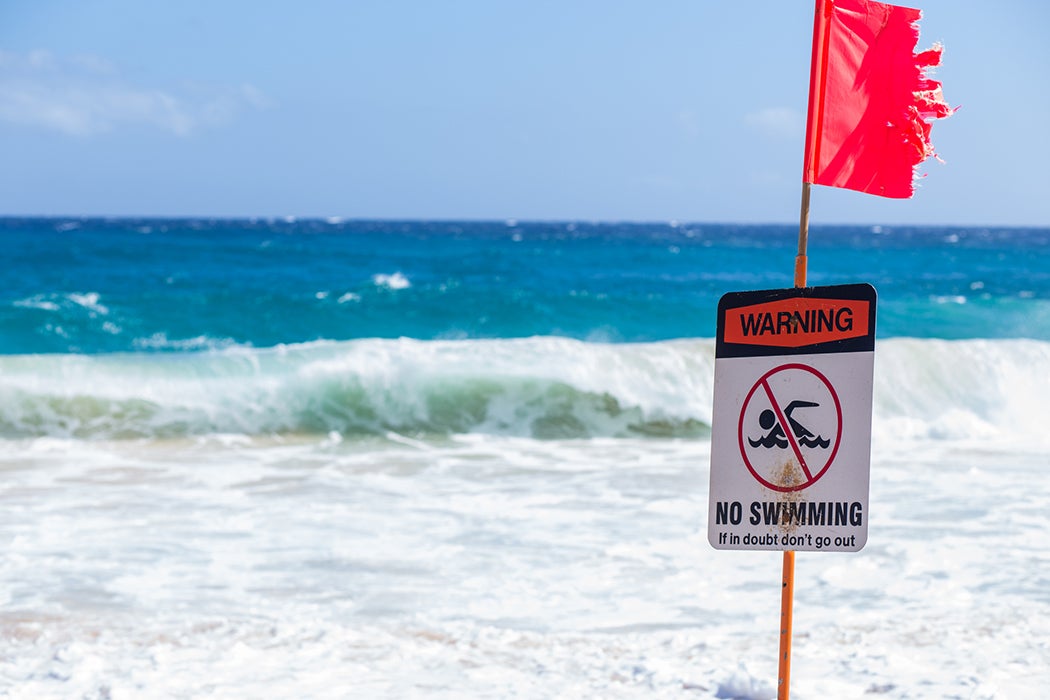Beating the heat at the beach? Be careful of rip currents, one of the greatest hazards to ocean swimmers. These fearsome, invisible currents can pull swimmers or waders well away from shore and result in thousands of drownings and near misses a year. A family in Florida found this out the hard way when some children were caught in a rip current. Family members who tried to save them were trapped as well, before a human chain consisting of more than 80 people pulled them back to shore. What causes rip currents? Are there any warning signs?
Rip currents result from a need for balance between land and ocean. Incoming waves bring water towards the shore. Without some mechanism to return that water back out to sea, water would pile up against the shore. In most cases, the undertow—a weak subsurface seaward movement of water—handles this task. But sometimes, extra water piles up along the shore, usually due to strong offshore winds. In this case, the undertow is insufficient, and an outbound surface current forms—a rip current. This can happen even if the weather is nice at the beach.
The rip current will typically form where the physical structure of the shore makes it easier for water to escape, such as channels, and are less likely when the shore topography is uniform. Rip tides may also form where water moving parallel to shore hits a jetty or other structure and is forced to turn out to sea, creating a rip.
Always obey all posted warnings and lifeguard instructions. If caught in a rip, stay calm and don’t fight it. Strong swimmers can swim parallel to shore to escape and then swim diagonally back to shore, but this can be difficult. Since a rip won’t pull you down, weaker swimmers can simply float, conserving energy. Many rips will eventually move you back into shoreward bound water, (a research group threw themselves into many rip currents to learn that) so you might eventually be able to bodysurf your way back to shore once the current dissipates. Be aware that some rips will not dissipate until well beyond the surf zone, where it will be a long swim back.
There are efforts underway to predict rip currents, and provide better training for lifeguards to recognize the signs. Some beaches, like Peranporth, in Cornwall, England, are developing mathematical prediction models based on on wave propagation, fluid flow dynamics, and the specific conditions at a particular location. These models may soon predict the appearance and behavior of rip currents, protecting swimmers before they are in danger.







